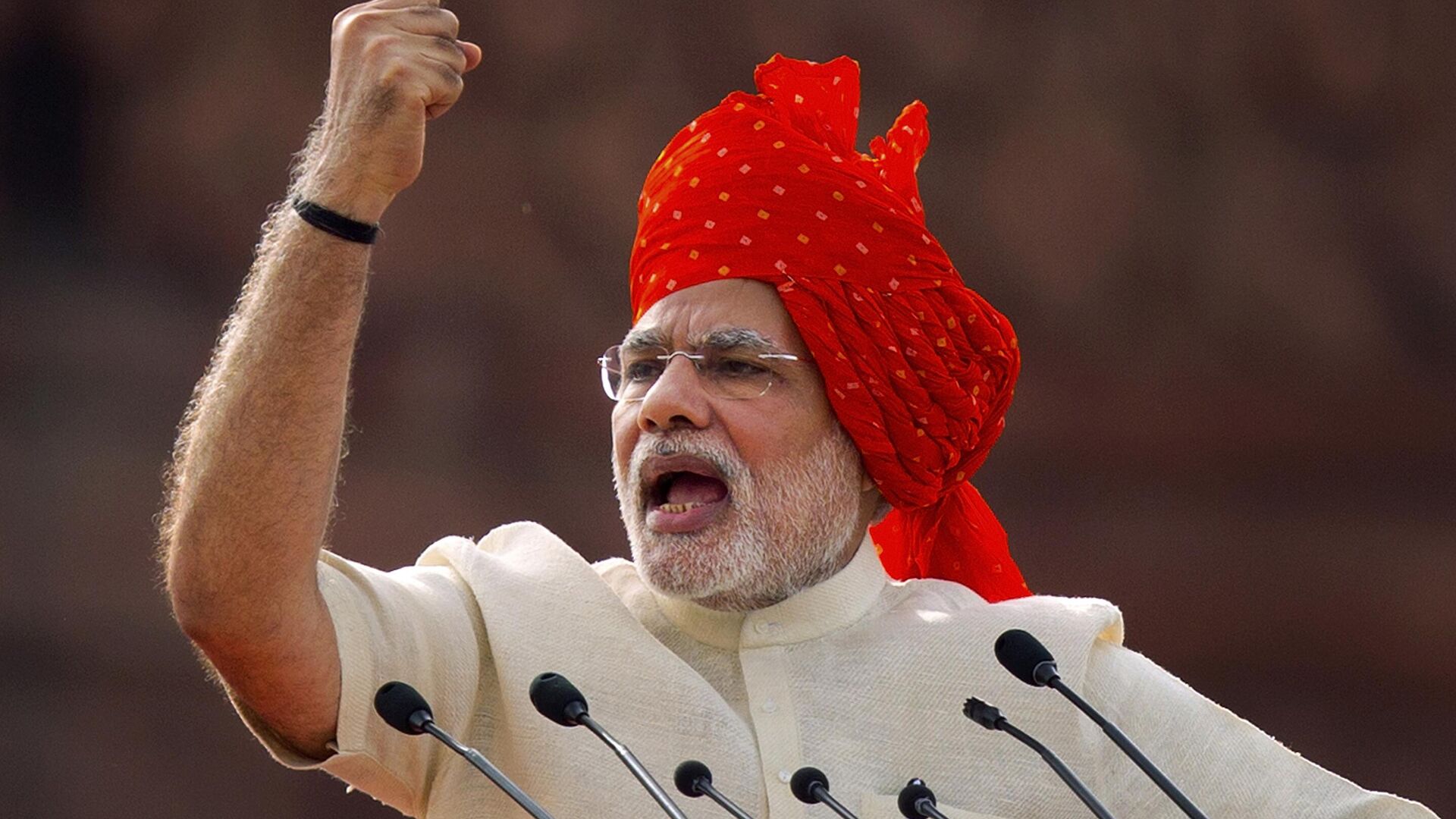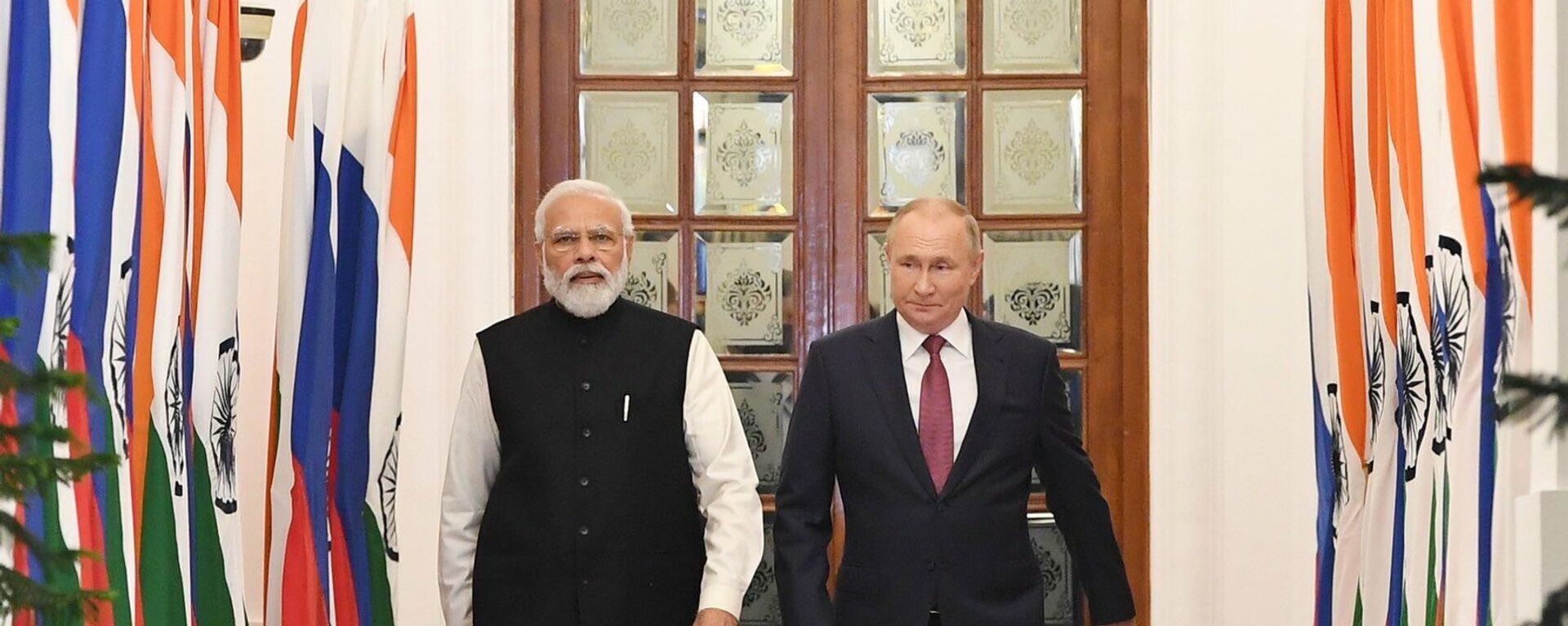https://sputniknews.in/20251001/indigenous-4g-network-how-the-initiative-helps-strengthen-indias-economic-sovereignty-9849480.html
Indigenous 4G Network: How the Initiative Helps Strengthen India's Economic Sovereignty
Indigenous 4G Network: How the Initiative Helps Strengthen India's Economic Sovereignty
Sputnik India
India joined a select band of nations, including China and South Korea, that build telecom equipment on their own soil. 01.10.2025, Sputnik India
2025-10-01T11:58+0530
2025-10-01T11:58+0530
2025-10-01T11:58+0530
business & economy
narendra modi
india
china
south korea
bharatiya janata party (bjp)
denmark
sweden
5g and 6g technology
cutting-edge technology
https://cdn1.img.sputniknews.in/img/07e9/07/12/9470612_0:217:2871:1832_1920x0_80_0_0_95452ec55d73386b094cbf8db7ac2c24.jpg
India's Swadeshi 4G stack, which was inaugurated by Prime Minister Narendra Modi during the weekend, highlights the country's ability to master niche technologies and reduce its reliance on foreign telecom equipment manufacturing nations like China, South Korea, Denmark and Sweden, thus strengthening both national security and tech sovereignty, an expert has said.Notably, the initiative, undertaken by the state-run Bharat Sanchar Nigam Limited (BSNL), provides a significant boost to India's telecom infrastructure.A 4G stack is an assembly of a telecom device that brings together hardware and software, ensuring seamless connectivity and data flow through a robust internet connection.The Swadeshi 4G network is fully software-driven, cloud-based, with future-ready design and seamlessly upgradable to 5G, according to India's Minister of Communications Jyotiraditya M. Scindia.Additionally, India rolled out 98,000 4G mobile towers across the country, which were once again built with the indigenous technology stack.With the launch of the indigenous 4G stack, India has busted the narrative that it couldn't achieve self-reliance in the sector because Indian telecom operators were too dependent on the Chinese company Huawei for equipment, Dr Ashwani Mahajan, an economist and the National Co-Convener of Swadeshi Jagaran Manch (SJM), a Rashtriya Swayamsevak Sangh (RSS) affiliate, told Sputnik india.However, nationalist organisations like the SJM, and others linked to the RSS, and even a section of the ruling Bharatiya Janata Party (BJP), realised that being solely dependent on a foreign company to run India's telecom network could paralyse the country's critical sectors like defence, banking, government services, amongst others, posing a genuine threat to national security, especially during times of geopolitical tensions, he added.In the next decade or so, India will emerge as one of the two biggest powers in cutting-edge technology related to telecom, strengthening its economic sovereignty and solidifying its superpower status, he added.The 4G stack development is also an answer to a World Bank report in which the global lender has suggested that India was committing a mistake by building its own telecom technology. But India's technocrats have proved the World Bank wrong, given how important it is to have home-grown technology in a domain like telecom. Imagine what could happen if a foreign power shuts down the country's mobile network during a war-like scenario, the strategic affairs commentator asked.
https://sputniknews.in/20250930/-lavrov-9848912.html
india
china
south korea
denmark
sweden
Sputnik India
feedback.hindi@sputniknews.com
+74956456601
MIA „Rossiya Segodnya“
2025
Pawan Atri
https://cdn1.img.sputniknews.in/img/07e6/0c/13/139630_147:0:831:684_100x100_80_0_0_8fa2b25903e7787fe6a2698552c167df.png
Pawan Atri
https://cdn1.img.sputniknews.in/img/07e6/0c/13/139630_147:0:831:684_100x100_80_0_0_8fa2b25903e7787fe6a2698552c167df.png
News
en_IN
Sputnik India
feedback.hindi@sputniknews.com
+74956456601
MIA „Rossiya Segodnya“
Sputnik India
feedback.hindi@sputniknews.com
+74956456601
MIA „Rossiya Segodnya“
Pawan Atri
https://cdn1.img.sputniknews.in/img/07e6/0c/13/139630_147:0:831:684_100x100_80_0_0_8fa2b25903e7787fe6a2698552c167df.png
narendra modi, india, china, south korea, bharatiya janata party (bjp), denmark, sweden, 5g and 6g technology , cutting-edge technology, cloud technology, world bank
narendra modi, india, china, south korea, bharatiya janata party (bjp), denmark, sweden, 5g and 6g technology , cutting-edge technology, cloud technology, world bank
Indigenous 4G Network: How the Initiative Helps Strengthen India's Economic Sovereignty
India joined a select band of nations, including China and South Korea, that build telecom equipment on their own soil.
India's Swadeshi 4G stack, which was inaugurated by Prime Minister Narendra Modi during the weekend, highlights the country's ability to master niche technologies and reduce its reliance on foreign telecom equipment manufacturing nations like China, South Korea, Denmark and Sweden, thus strengthening both national security and tech sovereignty, an expert has said.
Notably, the initiative, undertaken by the state-run Bharat Sanchar Nigam Limited (BSNL), provides a significant boost to India's telecom infrastructure.
A 4G stack is an assembly of a telecom device that brings together hardware and software, ensuring seamless connectivity and data flow
through a robust internet connection.
The Swadeshi 4G network is fully software-driven, cloud-based, with future-ready design and seamlessly upgradable to 5G, according to India's Minister of Communications Jyotiraditya M. Scindia.
"This marks a new era for India in the telecom sector, as India enters the ranks of the world's top telecom equipment manufacturers. The fully indigenous 4G technology stack featuring a Radio Access Network (RAN) developed by Tejas Network, a core network by C-DOT, and integrated by TCS, has been deployed by BSNL under the vision of Aatmarnirbhar Bharat," he stated.
Additionally, India rolled out 98,000 4G mobile towers across the country, which were once again built with the indigenous technology stack.
With the launch of the indigenous 4G stack, India has busted the narrative that it couldn't achieve self-reliance in the sector because Indian telecom operators were too dependent on the Chinese company Huawei for equipment, Dr Ashwani Mahajan, an economist and the National Co-Convener of Swadeshi Jagaran Manch (SJM), a Rashtriya Swayamsevak Sangh (RSS) affiliate, told Sputnik india.
However, nationalist organisations like the SJM, and others linked to the RSS, and even a section of the ruling
Bharatiya Janata Party (BJP), realised that being solely dependent on a foreign company to run India's telecom network could paralyse the country's critical sectors like defence, banking, government services, amongst others,
posing a genuine threat to national security, especially during times of geopolitical tensions, he added.
"After all, when the technology is theirs, they have control over it, and then one can't really protect one's national security. Nonetheless, when most countries in the world are still struggling to integrate 3G technology, India is already moving towards a national rollout of the 5G network. As I have learnt from government sources, India now has control over 5G technology," Mahajan said.
In the next decade or so, India will emerge as one of the two biggest powers in cutting-edge technology related to telecom, strengthening its economic sovereignty and solidifying its superpower status, he added.
The 4G stack development is also an answer to a
World Bank report in which the global lender has suggested that India was committing a mistake by building its own telecom technology. But India's technocrats have proved the World Bank wrong, given how important it is to have home-grown technology in a domain like telecom. Imagine what could happen
if a foreign power shuts down the country's mobile network during a war-like scenario, the strategic affairs commentator asked.
"There's little doubt that telecommunications networks are strategically important assets because everything from payment systems to e-commerce to social media to medical services and others can't function without the internet. That's why it is essential to become self-reliant in this domain," Mahajan concluded.



